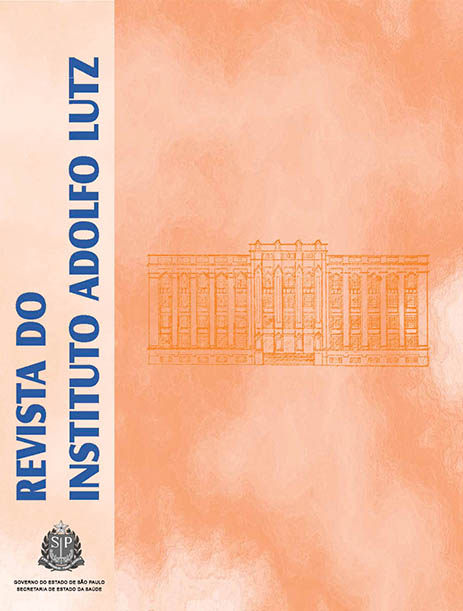Abstract
This study aimed at evaluating the physicochemical characteristics and the total antioxidant activity (TAA) of the red and white pytaias peel and pulp. Centesimal composition, vitamin C, total phenolics and TAA were determined in pitayas pulp and peel samples. TAA was determined by using two methodologies: β-carotene/linoleic acid system and free DPPH radical for scavenging activity. Both the pitayas peels and pulps showed high moisture content and low protein and lipid contents. The total food fiber and ashes contents were significantly higher in pitayas peels, and the highest glucide contents and of energy were found in the pulps. The average contents of vitamin C ranged from 17.73 to 20.69 (mg.100 g-1) in pulps and from 22.21 to 24.05 (mg.100 g-1) in peel samples. The red pitaya peel showed the lowest total phenolics contents (77.22 mg EAG.100g-1). The pitayas samples demonstrated a high TAA in beta-carotene/linoleic acid system methodology and low TAA by DPPH. The red pitaya showed the highest TAA values, especially in pulp samples. The antioxidant and the chemical characteristics of the red and white pitayas may contribute to a beneficial diet for human health.References
1. Mizrahi Y, Nerd A, Nobel PS. Cacti as crops. Hort Rev. 1997;18:291-320.
2. Merten S. A review of Hylocereus production in the United States. J PACD. 2003;32(4):98-105.
3. Junqueira KPJ, Faleiro FG, Junqueira NTV, Bellon G, Lima CA, Souza LS. Diversidade genética de iitayas nativas do cerrado com base em marcadores RAPD. Rev Bras Frutic. 2010;32(3):819-24.
4. Moreira RA, Ramos JD, Marques VB, Araújo NA, Melo PC. Crescimento de pitaia vermelha com adubação orgânica e granulado bioclástico. Cienc Rural. 2011;41(5):785-8.
5. Bastos CD, Pio R, Scarpare Filho JA, Libardi MN, Almeida LFP, Galuchi TPD, et al. Propagação da pitaia vermelha por estaquia. Ciênc Agrotecnol. 2006;30(6):1106-9.
6. Stintzing FC, Shieber A, Carle R. Evaluation of colour properties and chemical quality parameters of cactus juices. Eur Food Res Technol. 2003;216(4):303-11.
7. Beltrán-Orozco MC, Oliva-Coba TG, Gallardo-Velázquez T, Osorio-Revilla G. Ascorbic acid, phenolic content, and antioxidant capacity of red, cherry, yellow and white types of pitaya cactus fruit (Stenocereus stellatus Riccobono). Agrocienc. 2009;43(2):153-62.
8. Wichienchot S, Jatupornpipat M, Rastall RA. Oligosaccharides of pitaya (dragon fruit) flesh and their prebiotic properties. Food Chem. 2010;120(3):850-7.
9. Mahattanatawee K, Manthey JA, Luzio G, Talcott ST, Goodner K, Balswin EA. Total antioxidant activity and fiber content of select Florida-grown tropical fruits. J Agric Food Chem. 2006;54(19):7355-63.
10. Choo WS, Yong WK. Antioxidant properties of two species of Hylocereus fruits. Adv Appl Sci Res. 2011;2(3):418-25.
11. Association of Official Analytical Chemists. Official methods of the Association of the Agricultural Chemists. Washington; 1998. 1094p.
12. Mahan LK, Escott-Stump S. Alimentos, nutrição & dietoterapia. 11. ed. São Paulo: Roca; 2005.
13. Instituto Adolfo Lutz. Normas analíticas do Instituto Adolfo Lutz:métodos químicos e físicos para análise de alimentos. 3. ed. São Paulo; 1985. 371p.
14. Dische Z. General color reactions. In: Whistler RL, Wolfran ML. Carbohydrate chemistry. New York: Academic; 1962. p.477-512.
15. Strohecker RL, Henning HM. Analisis de vitaminas:métodos comprobados. Madri: Paz Montalvo; 1967. 428p.
16. Waterhouse AL. Polyphenolics: determination of total phenolics. In: Wrolstad RE. Currente protocols in food analytical chemistry. New York: J. Wiley; 2002. p. 11-8.
17. Rufino MSM, Alves RE, Brito ES, Morais SM, Sampaio CG, Pérez-Jiménez J, et al. Metodologia científica:determinação da atividade antioxidante total em frutas pela captura do radical livre DPPH. EMBRAPA Com Técn. 2007;127:1-4.
18. Rufino MSM, Alves RE, Brito ES, Filho JM, Moreira AVB. Metodologia científica:determinação da atividade antioxidante total em frutas no sistema β-caroteno/Ácido Linoléico. EMBRAPA Com Técn. 2006;126:1-4.
19. Le Bellec F, Vaillant F, Imbert E. Pitahaya (Hylocereus spp.): a new fruit crop, a market with a future. Fruits. 2006;61(4):237-50.
20.Tabela Brasileira de composição de alimentos. Campinas: NEPA/UNICAMP; 2006. 105p.
21. Silva MR, Lacerda DBCL, Santos GG, Martins DMO. Caracterização Química de Frutos Nativos do Cerrado. Cienc Rural. 2008;38(6):1790-3.
22. Wu LC, Hsu HW, Chen YC, Chiu CC, Lin YL, Ho JA. Antioxidant and antiproliferative activities of red pitaya. Food Chem. 2006;95(2):319-27.
23. Couto MAL, Canniatti-Brazaca SG. Quantificação de vitamina C e capacidade antioxidante de variedades cítricas. Ciênc Tecnol Alim. 2010;30 Supl 1:15-9.
24. Institute of Medicine/Food and Nutrition Board. Dietary reference intakes for vitamin C, vitamin E, selenium, and carotenoids. Washington: National Academy Press; 2000. 529p.
25. Lim YY, Lim TT, Tee JJ. Antioxidant properties of several tropical fruits: A comparative study. Food Chem. 2007;103:1003-8.
26. Vaillant F, Ana P, Indiana D, Manuel D, Max R. Colorant and antioxidant properties of red-purple pitahaya (Hylocereus sp.). Fruits. 2005;60(1):3-12.

This work is licensed under a Creative Commons Attribution 4.0 International License.
Copyright (c) 2012 Instituto Adolfo Lutz Journal
